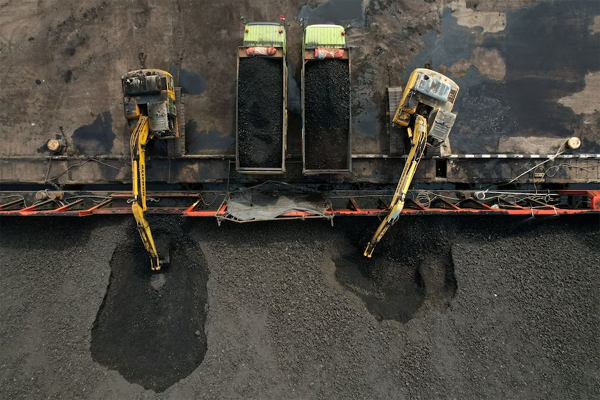
Will Wade | Bloomberg
NEW YORK
EnergiesNet.com 02 07 2023
There’s little debate that phasing out coal-fired power plants is necessary to avoid the worst climate change scenarios. Yet rather than fade away, coal, the biggest source of carbon emissions, is experiencing a renaissance. Worries about global warming have been overtaken by more prosaic ones about keeping the lights on. Those concerns are the result of shortfalls of a different power source — natural gas — brought on by the disruptions of the pandemic and the war in Ukraine.
1. How much coal is used now?
Coal is by far the biggest source of electricity in the world, generating more than 36% of it. Global usage had started to fall after 2018, but it rose again in 2021 and reached an all-time high in 2022, surpassing 8 billion metric tons for the first time. The International Energy Agency expects demand to remain at that level at least through 2025.

2. Who burns all that coal?
In developing countries, notably China and India, the two biggest consumers, coal use has grown almost continuously for decades. These countries see coal as the cheap and convenient source of power they require to modernize their economies. Together, they consumed 67% of the world’s coal in 2022, compared with 35% in 2000. As a general trend, coal consumption had been falling in industrialized countries, especially the US and European states. But in 2021 and 2022, consumption rose in the European Union, which has struggled to secure sufficient imports of natural gas, the second biggest source of electricity. Usage also climbed in the US in 2021. But it’s sliding again in the US, which unlike the EU is self-sufficient in natural gas. The amount of US electricity generated by coal in 2024 is expected to be down almost two-thirds from the peak in 2007.
3. How did the pandemic affect coal use?
With the onset of the pandemic in early 2020, electricity consumption fell dramatically as factories and offices around the world shut down. That led producers of natural gas to curb their output. Then, when Covid restrictions began to ease in 2021, demand for power surged. Gas suppliers struggled to ramp up production fast enough. Utilities clamored for an alternative to keep the power flowing, pushing coal prices to record highs. A huge government-backed drive for mine expansions and developments lifted supply in China, while India also had some success boosting output.
4. How has the war in Ukraine affected coal use?
In response to European sanctions aimed at punishing Russia for its invasion of Ukraine, Moscow in early 2022 began choking off natural gas supplies to Europe. The continent had relied on Russia for about 40% of its gas and has boosted coal usage to fill the gap. It’s also had to replace Russian coal with supplies from elsewhere because of an EU ban on Russian imports. All of which has put pressure on international supplies, prompting China to boost domestic mining to keep its power plants running.
5. What is China’s coal policy?
China uses more coal than all other countries combined, so its actions are a huge factor in determining whether the world shifts away from the dirtiest fossil fuel. President Xi Jinping has pledged that China’s coal use would peak by 2026, and his government plans to dramatically boost production of power using renewable sources. However, officials also have been pressing coal miners to increase output to record volumes and China is expanding its fleet of coal-fired power plants to avoid economy-crippling power shortages.
6. What’s at stake?
In the landmark 2015 Paris Agreement, nations agreed to work to limit global warming since the Industrial Revolution to no more than 1.5C, the level that scientists agree would avoid the most catastrophic impact of climate change. However, the Earth has now warmed by about 1 degree, and the impact is already profound. Researchers have found that since 2011, the vast majority of extreme weather events — such as heat waves, drought and hurricanes — were more likely to occur, or were made more severe, because of global warming. The result is often significant destruction and threatened agricultural production. Scientists warn that under policies currently in place, the planet may heat up by as much as 2.4 degrees. They calculate that if governments fully implement policies to reach more ambitious targets under discussion in global talks, warming may reach 1.8 degrees. Meeting those goals would be difficult without sharply reducing coal consumption.
7. What’s happening in global talks?
International climate talks have made only incremental progress in recent years. Ahead of the COP26 talks in Glasgow in 2021, there was optimism that nations would agree to bring coal consumption to an end. However, with power shortages at the time underscoring the importance of the fuel, the conference ended with a less ambitious deal to phase coal down rather than out. China’s continuing investments in coal cast a pall over negotiations at the COP27 talks in Egypt in 2022. The conference ended with an historic agreement to create a fund to help nations most vulnerable to and impacted by global warming face its effects. But the meeting failed to strengthen goals on phasing down fossil fuels.
bloomberg.com 02 06 2023












